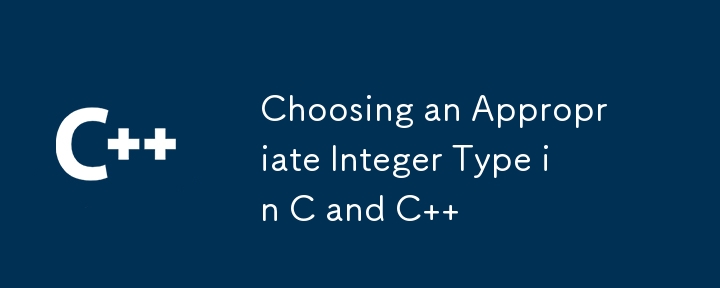

When Dennis Ritchie created C, he made int (a signed integer type) be the default type. Thesize(number of bits) of an int was deliberatelynotspecified. Even when C was standardized, all that was guaranteed was aminimumsize. The rationale was that the size of int should be the “natural” word size for an integer on a given CPU.
If you needed only smaller signed integers and wanted to save a bit of space, Ritchie gave us short; or, if you needed bigger integers, he gave us long. (C99 gave us even bigger integers with long long.) If you only needed unsigned integers, you could include unsigned in a declaration. C99 also gave us specific-sized signed integer type aliases (e.g., int32_t) and unsigned type aliases (e.g., uint32_t).
However, in programming, negative integers (thus requiring the a signed integer type), aren’t needed most of the time. The length of strings, count of objects, size of objects, size of files, etc., are all unsigned integers. Specific-sized type aliases are needed even less than signed integers.
Yet I’ve seen alotof code that uses integer types inappropriately. Such code can convey either underspecified or misleading information to readers (including yourself in several months’ time). It’s best to choose the right integer type for the right purpose.
Here are my guidelines for choosing an integer type:
This is the type used by both the C and C++ standard libraries, e.g., by memcpy(), strlen(), std::string::size(), etc., so there’s plenty of precedent.
If you’re dealing withverylarge files, on some platforms, you may need to compile with -D_FILE_OFFSET_BITS=64 to get a 64-bit version of off_t.
This is also the type used by both the C and C++ standard libraries, e.g., by fread() and fwrite().
The only times you typicallyneeda fixed-size integer is when you “externalize” a value, e.g., write it to disk or send it over a socket.
Using a fixed-size integer when you don’t actually need a specific number of bits conveys wrong information to the reader.
Furthermore:
When representing an integer value thatmustbe theexactsize of a pointer, use either the standard intptr_t or uintptr_t type alias.
Only ifyou need negative values, use one of short, int, long, or long long with int being preferred unless you need either smaller or larger values.
Lastly:
That is, unless you’re dealing with one of the listed cases above, default to using unsigned types.
Choosing the right integer type conveys correct information to the reader and can eliminate run-time checks.
Originally, and up until C99, int was theimplicittype, that is if you didn’t specify any type at all, it was understood to be int. For example:
power( x, n ) /* x and n are int; returns int */ { int p; for ( p = 1; n > 0; --n ) p *= x; return p; }
defines a function that has int parameters and returns int, yet int isn’t used in the declaration.
Function prototypes were back-ported from C++ to C89, yet the original “K&R style” function definitions were still allowed all the way up until C23. The ANSI C committee is a conservative bunch.
Even weirder, pre-C99 also allowed int to be implicit in declarations such as:
i; // int i *p; // int *p *a[4]; // int *a[4] *f(); // int *f()
Fortunately, such declarations have long since been illegal.
The above is the detailed content of Choosing an Appropriate Integer Type in C and C++. For more information, please follow other related articles on the PHP Chinese website!
 amd240
amd240 What does it mean to connect to windows?
What does it mean to connect to windows? NTSD command usage
NTSD command usage Is A5 bigger or B5 paper bigger?
Is A5 bigger or B5 paper bigger? How to read database in html
How to read database in html Recommended computer hardware testing software rankings
Recommended computer hardware testing software rankings How to solve the problem of forgetting the power-on password of Windows 8 computer
How to solve the problem of forgetting the power-on password of Windows 8 computer What are the types of lasso tools in PS?
What are the types of lasso tools in PS?



